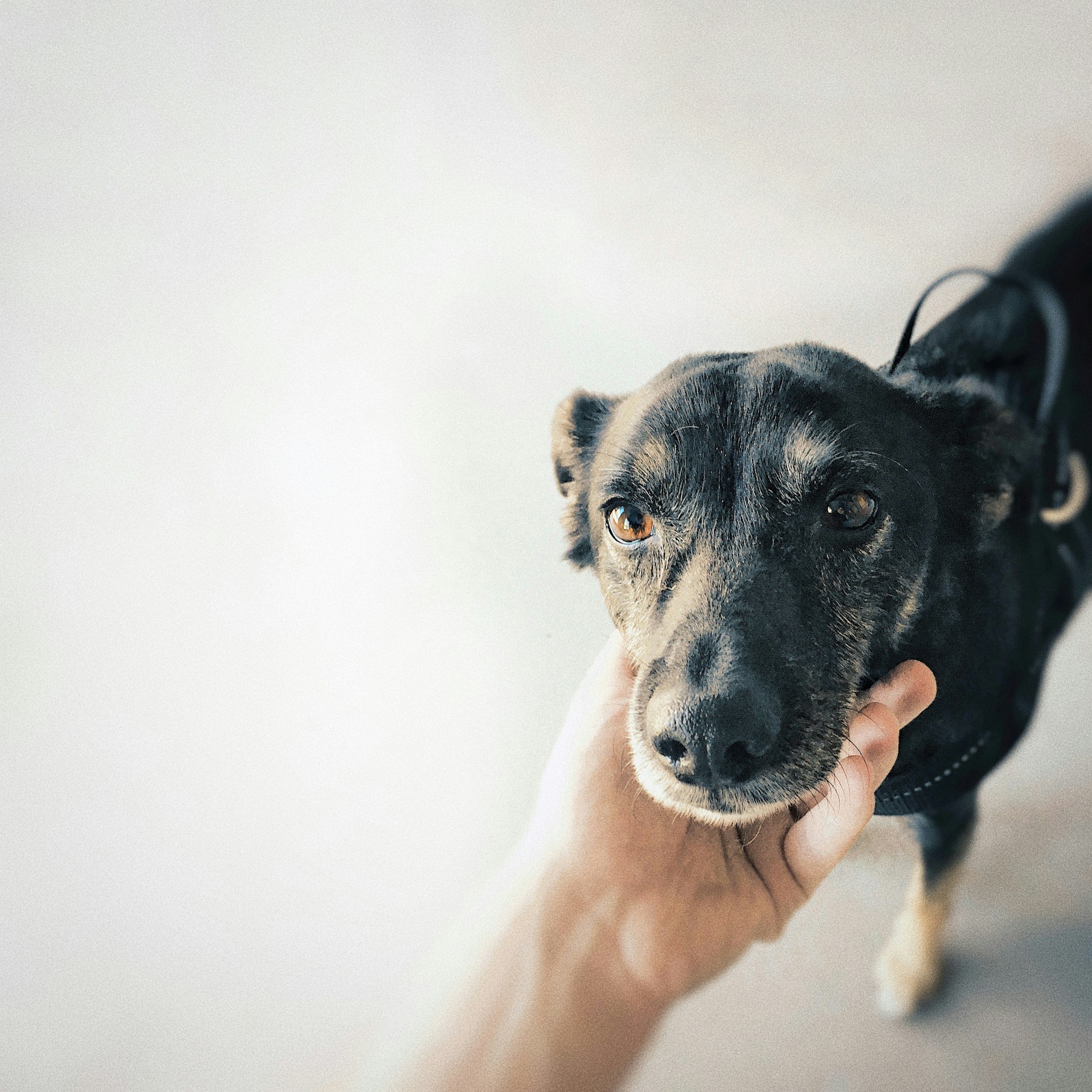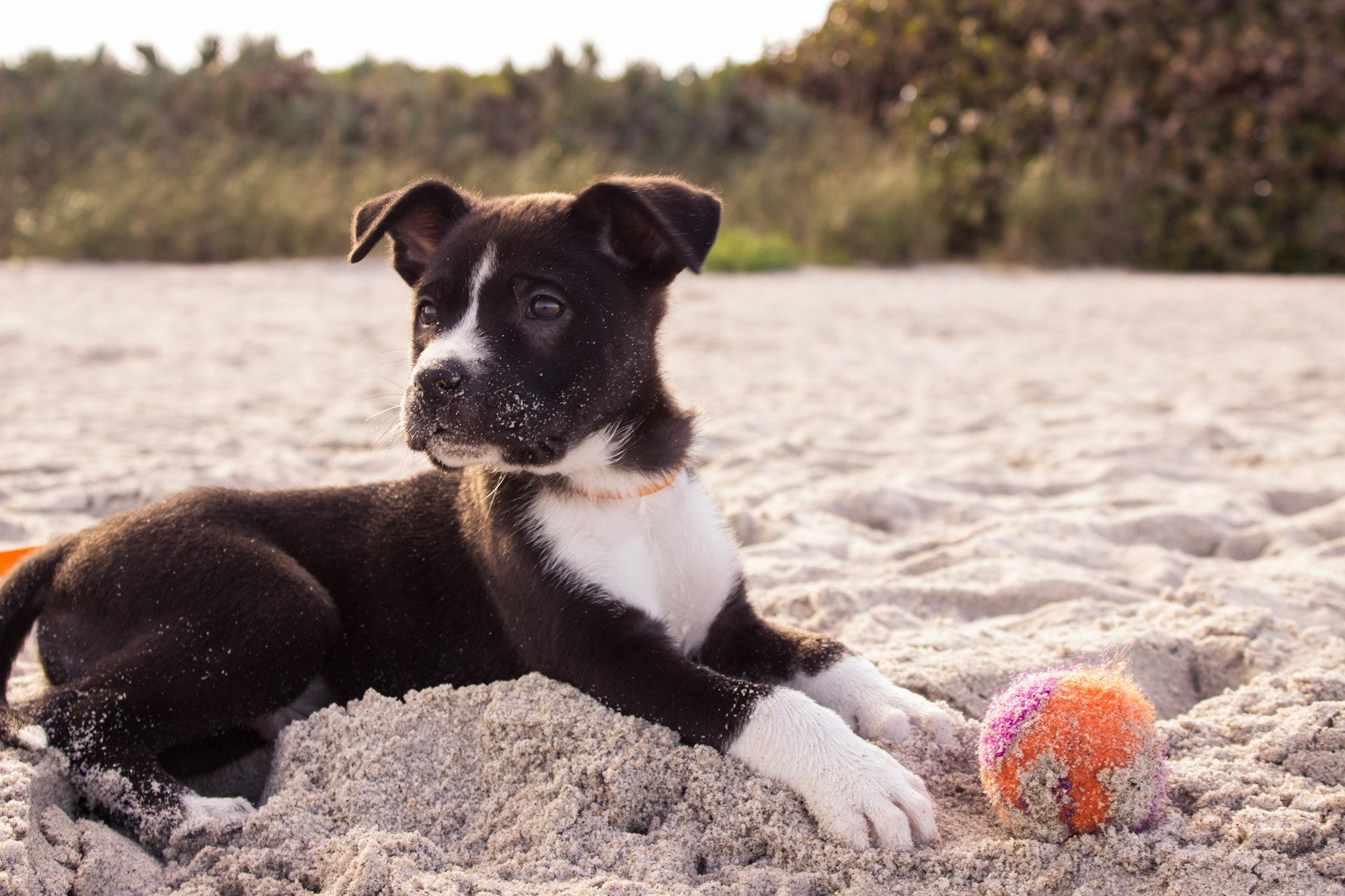Bringing a rescue dog into your home is a rewarding experience, but it comes with its unique set of challenges. Proper training is essential not only for the well-being of the dog but also for establishing a harmonious relationship between you and your new companion.

Understanding Your Rescue Dog
In the realm of training a rescue dog, a pivotal starting point is comprehending the intricacies of your newfound companion. This isn't a one-size-fits-all scenario; each rescue dog comes with its own unique history, temperament, and set of challenges. It's imperative to delve into the background of your rescue, unraveling the threads of its past that might be influencing its present behavior.
Assessing the Dog's History and Temperament
Scrutinize the records, if available, from the rescue center or previous owners. These documents can provide vital clues about the dog's previous living conditions, any traumatic experiences, or patterns of behavior. Understanding the dog's history lays the groundwork for tailoring an effective training regimen.
Additionally, observe the dog's temperament in various situations. Does it exhibit signs of fear, aggression, or shyness? Identifying these traits early on allows for a more nuanced and targeted approach to training, addressing specific challenges head-on.

Identifying Potential Behavioral Issues
Rescue dogs often come with a set of behavioral issues rooted in their past experiences. These could manifest as distrust, separation anxiety, or even aggressive tendencies. A critical eye must be cast on these potential issues to devise a training strategy that not only corrects undesirable behavior but also nurtures the emotional well-being of the dog.
Understanding your rescue dog isn't a one-time task. It's an ongoing process that involves keen observation, patience, and a commitment to adapting your training methods as you uncover more about your furry companion.
Establishing Trust and Bonding
The foundation of a successful training journey with a rescue dog rests on the pillars of trust and bonding. These elements are not built overnight; they require time, consistency, and a genuine connection between you and your dog.
Building a Strong Foundation of Trust
Trust is the cornerstone of any healthy relationship, and it's no different when it comes to training rescue dogs. Many of these animals have faced uncertainties and traumas, making trust-building a gradual and delicate process. Be reliable in your actions, and avoid situations that may erode the trust you're trying to establish.
Consistency is paramount. If you've promised a treat for good behavior, deliver it promptly. If you've set boundaries, enforce them consistently. This predictability creates a sense of security for your rescue dog, fostering trust as a result.
Techniques for Bonding with Your Rescue Dog
Bonding is the glue that solidifies the relationship between you and your rescue dog. It involves more than just training sessions; it's about shared experiences and positive interactions. Spend quality time engaging in activities your dog enjoys, whether it's playtime, walks, or simply lounging together.
Physical touch, like gentle petting and stroking, can be immensely reassuring for a rescue dog. This tactile connection strengthens the bond and communicates a sense of safety. As you build this emotional bridge, you'll find your rescue dog becoming more responsive and open to the training process.
Basic Obedience Training
Embarking on the training odyssey with your rescue dog necessitates laying down a solid foundation through basic obedience training. This phase isn't merely about instilling commands; it's about establishing a language of communication between you and your canine companion, promoting a well-behaved and responsive demeanor.
Teaching Fundamental Commands Like Sit, Stay, and Come
The cornerstone of basic obedience lies in instilling fundamental commands. "Sit," "Stay," and "Come" aren't just words; they're the building blocks of a disciplined and well-controlled dog. Consistency is paramount here – each command should be delivered with authority and clarity.
The approach to teaching these commands should be positive and reward-based. When your rescue dog follows a command correctly, promptly reward them with treats or praise. This not only reinforces good behavior but also associates obedience with positive outcomes.
Positive Reinforcement Methods for Obedience
Positive reinforcement is the linchpin of effective basic obedience training. Dogs, especially rescues, respond well to encouragement and rewards. This approach fosters a positive association with the training process, making your dog more eager to learn and comply.
However, it's crucial to understand the timing of reinforcement. Immediate rewards link the action with the consequence, aiding in quicker learning. On the flip side, avoid punishment-based methods, as they can lead to fear and anxiety, hindering the training progress.
Addressing Behavioral Challenges
As the journey of training unfolds, it's inevitable to encounter behavioral challenges. Rescue dogs, in particular, may carry baggage from their past, manifesting in various behaviors that require thoughtful and strategic intervention.
Handling Fear and Anxiety Issues
Fear and anxiety are common challenges in rescue dogs. Patiently expose your dog to various stimuli in a controlled manner, gradually desensitizing them. Create positive associations by offering treats or praise when your dog exhibits calm behavior in the face of fear-inducing situations.
Dealing with Aggression or Shyness
Aggression or shyness can be complex issues requiring a nuanced approach. Identify triggers for aggressive behavior and work on desensitization. Shy dogs benefit from gradual socialization, introducing them to new people and environments at their own pace. Seeking professional guidance may be necessary for severe cases.
Understanding that behavioral challenges are often rooted in past experiences is crucial. Avoiding punitive measures and opting for positive reinforcement helps rebuild your rescue dog's confidence and trust in a supportive environment.
Socialization Strategies
Socialization is the linchpin of a well-adjusted and sociable rescue dog. The lack of proper socialization can lead to behavioral issues, making it a pivotal aspect of their training regimen. To instill confidence and ensure your dog thrives in various environments, strategic socialization is imperative.
Exposing Your Rescue Dog to Various Environments
A well-socialized dog is one that is exposed to a multitude of environments. Introduce your rescue dog to different settings, sounds, and experiences, starting with controlled and less intimidating scenarios. Gradually increase the complexity of environments, allowing your dog to adapt and build confidence.

Ensuring Positive Interactions with Other Pets and People
Positive interactions are key to effective socialization. Arrange controlled encounters with other dogs and people, ensuring they are calm and positive experiences. Use treats and praise to reinforce good behavior, creating positive associations with social interactions.
Socialization is an ongoing process, especially for rescue dogs. Consistency is vital, and the earlier you start, the better. Regular exposure to diverse situations will contribute to a well-rounded and adaptable canine companion.
Creating a Consistent Routine
In the realm of dog training, the power of routine cannot be overstated. A consistent routine provides structure and predictability, which are vital for a rescue dog's sense of security and understanding. It forms the backdrop against which all training activities unfold.
The Importance of a Structured Daily Schedule
Dogs thrive on routine, and rescue dogs, in particular, benefit immensely from a structured daily schedule. Establish set times for meals, walks, play, and training sessions. Predictability in their day-to-day life alleviates anxiety and creates an environment conducive to learning.
Incorporating Training into Daily Activities
Integration is key. Rather than relegating training to specific sessions, incorporate it into daily activities. This could involve reinforcing basic commands during walks, using meal times as training opportunities, or integrating short training sessions into playtime. This approach ensures that training becomes a seamless part of your dog's daily life.
Creating a consistent routine requires commitment and discipline from the owner. It's not just about the when but also about the how. Consistent communication, both verbal and non-verbal, establishes a clear understanding between you and your rescue dog.
Using Positive Reinforcement
Positive reinforcement stands as a cornerstone in the arsenal of effective dog training techniques, particularly for rescue dogs. The transformative power of positive reinforcement is profound, shaping not only behavior but also the emotional well-being of your four-legged companion.
Reward-Based Training Techniques
Reward-based training involves the strategic use of positive stimuli to reinforce desired behaviors. Whether it's treats, praise, or play, the key is to associate positive outcomes with specific actions. This not only motivates your rescue dog but also creates a positive and enjoyable training environment.
Choosing Appropriate Treats and Rewards
The selection of treats and rewards is crucial. Opt for high-value treats that captivate your dog's taste buds and hold their attention during training. Additionally, vary the rewards to maintain motivation levels. A balanced approach ensures that positive reinforcement remains a potent force in shaping your dog's behavior.
Positive reinforcement isn't just about treats; it's about expressing joy and approval. Verbal praise and enthusiastic physical affection are equally powerful in reinforcing good behavior. Remember, the goal is to create an atmosphere where your rescue dog associates training with positive experiences.
Training Tools and Equipment
The choice of training tools and equipment can significantly impact the effectiveness of your training sessions. While a plethora of options exists, discernment is crucial to select tools that align with positive reinforcement principles and prioritize the well-being of your rescue dog.
Selecting the Right Training Collar and Leash
Collars and leashes are fundamental tools in happy dog training. Opt for a GPS dog collar that fits comfortably and a leash of an appropriate length. Consider harnesses for dogs with respiratory issues or those prone to pulling. Always ensure that these tools do not cause discomfort or restrict your dog's movements.

Understanding the Use of Clickers and Other Aids
Clickers and training aids can enhance communication between you and your rescue dog. Clickers, for instance, provide a clear and immediate signal of desired behavior. However, their effectiveness lies in proper usage. Invest time in understanding how these tools work and integrate them seamlessly into your training routine.
Balancing the use of tools with positive reinforcement is crucial. Tools should augment, not replace, the role of positive reinforcement in shaping behavior. The focus should always be on creating a positive and enriching training experience for your rescue dog.
Patience and Consistency
Patience and consistency emerge as non-negotiable virtues in the realm of training rescue dogs. It's a journey laden with challenges, and mastering these attributes is akin to unlocking the gateway to success.
The Role of Patience in Training a Rescue Dog
Rescue dogs often carry emotional baggage, and their responses to training may be affected by past experiences. Patience is not just a virtue; it's a strategy. Understand that progress might be slow, setbacks may occur, but with patience, you create an environment where your dog can learn at its own pace.
Consistency as a Key Factor in Behavior Modification
Consistency is the bedrock of effective training. Consistent commands, rewards, and expectations foster clarity for your rescue dog. Be unwavering in your responses to both desired and undesired behaviors. Consistency reinforces the structure and predictability necessary for successful training.
Advanced Training Techniques
As your rescue dog becomes more comfortable, progress to advanced training techniques. Teach more complex commands and tricks to provide mental stimulation and enhance the bond between you and your furry friend.
Building Confidence in Your Rescue Dog
Boost your dog's self-esteem through training and positive experiences. Overcoming past traumas takes time, but with consistent effort, you can help your rescue dog become a confident and happy companion.
Involving the Whole Family in Training
A unified approach to training involving all family members creates a consistent learning environment for your dog. Assign responsibilities and ensure everyone follows the established training plan.
Seeking Professional Help
If you encounter significant challenges, don't hesitate to seek professional help. A reputable dog trainer or behaviorist can provide guidance and support, ensuring the well-being of both you and your rescue dog.
Celebrating Successes and Milestones

Acknowledge and celebrate the successes and milestones in your dog's training journey. Positive reinforcement, praise, and rewards go a long way in reinforcing good behavior and strengthening the bond between you and your rescue dog.
Conclusion
Training a rescue dog is a fulfilling but challenging endeavor that requires patience, consistency, and a deep understanding of your dog's unique needs. By following these guidelines and maintaining a positive and patient approach, you can build a strong bond with your rescue dog and help it become a well-adjusted and happy member of your family.
FAQs
- How long does it take to train a rescue dog? Training time varies, but consistent effort over several weeks is usually required for noticeable progress.
- What if my rescue dog has aggression issues? Seek professional help immediately. A professional trainer can assess the situation and provide guidance on managing and modifying aggressive behavior.
- Can I train an older rescue dog? Yes, older dogs can be trained, but it may take more time and patience. Consistency and positive reinforcement are key.
- Should I use punishment in training? It's recommended to focus on positive reinforcement instead of punishment, as it creates a more positive learning experience for your dog.
What if my rescue dog is not responding to training? Assess the training methods, be patient, and consider seeking advice from a professional trainer who can provide tailored solutions.